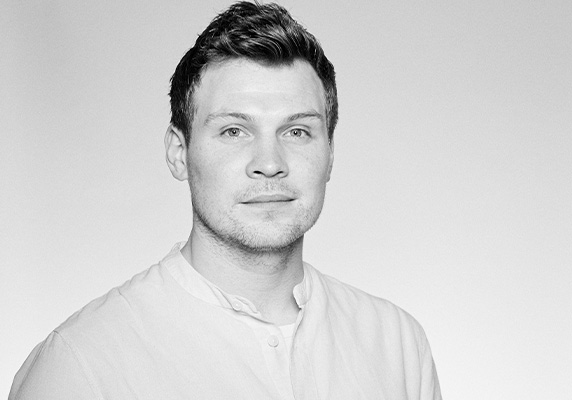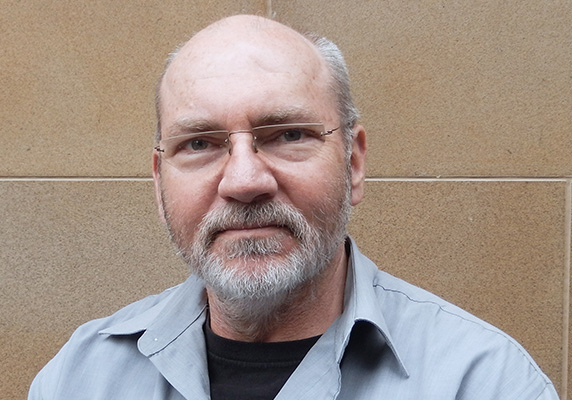Can Vienna's model provide a feasible blueprint for Sydney and Australia’s other major urban cities, which face a major housing crisis featuring unaffordable rents, unstable conditions, and exploitation by owner-investors and real estate agents?
Vienna, with its unique and internationally lauded housing model, was recently recognised by both the British culture magazine Monocle and The Economist’s sister company, the Economic Intelligence Unit (EIU).
The city impressed judges across a range of measures, both qualitative and quantitative, including affordability, cultural diversity, a thriving arts scene, and housing provisions. While Sydney featured in the top ten in the EIU list, it did not make the top ten in the Monocle Quality of Life Survey 2023, coming in at 14.
LSJ spoke to Viktoria Wagner, the Deputy Head of Mission at the Embassy of Austria in Canberra, Monocle’s Executive Editor Josh Fehnert, and Grant Arbuthnot, Principal Solicitor with the Tenants’ Union of NSW, about how Vienna’s housing model operates and the flow-on benefits of providing stable, affordable rental housing.
Measuring quality of life in cities
Every year, Monocle examines cities across every continent and uses a range of metrics to identify the 20 top-ranking cities to reside in. This year, the 16th survey evaluated the security metric, incorporating violent crime per capita and trust in the police, as well as the rising cost of living. Both of these metrics had a greater bearing on the survey results than ever before.
Fundamental measures of the most liveable cities included limits on the year-on-year increase in the average rent of a one-bedroom apartment, and reasonable prices for basics such as energy and a coffee. Other measures included new infrastructure projects and effective policies to ameliorate the effects of climate change.
London-based Fehnert explains, “At Monocle we run 25 or so core metrics, of which around five are new each year, depending on how the world has turned in the previous 12 months. This year that meant considering the relative cost of renting a home and how much it’s increased, as well as looking at safety and urban security in the form of violent crime per capita and trust in the police.”

While many North American cities fell in the rankings, as did Hong Kong and Taipei, Fehnert says, “Cities that have spent years thinking about and investing in public spaces always do well. Zürich, Munich, Melbourne, Kyoto and their ilk may not always have huge new developments to announce but they’ve consistently thought about walkability, transport and nature, and have great architecture, hospitality, education and culture to tempt people.”
It’s not only Monocle that rated Vienna as the most liveable city.
In a contest between 173 cities, The Economist Intelligence Unit (EIU) ranked Vienna as number one in its Global Liveability Index 2023, a ranking that it also achieved in 2018 and 2019. The ranking was based on 30 factors across five categories: stability, health care, culture and environment, education and infrastructure. In 2019, Melbourne came a close second, followed by Sydney and Osaka.
This year, the EIU report listed Vienna, Copenhagen, Melbourne, Sydney and Vancouver as its top five cities to live in.
Vienna’s housing model
Speaking from Canberra, Wagner says she was born and raised in Vienna before she moved abroad for university and has travelled broadly for work since. At the end of this year, she is returning to Vienna to live.
“I believe that the Vienna model for affordable housing makes a major contribution to social peace and equality in the city, and also brings people from different social and economic backgrounds together. I think citizens of Vienna are really proud that Vienna takes such good care that almost nobody is left behind in terms of housing,” she says.
Wagner says, “There are various kinds of housing that are either fully owned by the City of Vienna (social housing estates – Gemeindebau) or where the city government provides funding to not-for-profit developers to build rent-controlled flats.”

Gemeindebau is open to people below a certain income level, and there is no need for a deposit, while rent-controlled flats are open to people below a certain income level, and sometimes require a deposit, explains Wagner. This might be Euro 10,000–20,000, which will be returned once the tenant moves out.
“Currently, for example, Gemeindebau and rent-controlled flats are available for people with an annual net income less than Euro 79,490 (two-person household) … the median net income per person in Austria currently is around Euro 2300 per month. People are not at all ashamed to benefit from both types of housing provisions, regarding it as a welcome opportunity to benefit from high-quality housing at very affordable rates. Sometimes, Gemeindebau and rent-controlled flats even have better concepts [than private housing] when it comes to community spaces like playgrounds, community rooms, community gardening.”
For Gemeindebau or rent-controlled flats, applicants need to prove residence in Vienna for at least two years prior, and Austrian, European Union or Swiss citizenship, or refugee status in Austria or legal residence in Austria for at least five years prior.
Wagner says, “The City of Vienna justifies the five-year waiting period for non-Austrians before they have access to affordable housing in Vienna by pointing to the limited supply and the major taxpayer investment in affordable housing, requiring newcomers to make a contribution to the tax-base and community first.
“Austria collects a dedicated tax for the construction of affordable housing. Employees pay the affordable housing tax as part of their income tax and employers must also make a contribution. This tax is then allocated to the nine Austrian provinces in whose jurisdiction the construction of affordable housing units fall.”
Fehnert says, “Vienna calls itself Europe’s biggest landlord, and 60 per cent of its population lives in high quality housing that’s subsidised. This gives the city control over the market and allows more people to live more cheaply in security. A further 17,000 units were added last year.”
He adds, “This mix of current and historic investment is a neat fit with our view of what it means to live well. It’s about affordable, well-designed housing but also investing in culture, green space and the enjoyment of being here. There are many other reasons, from the city’s cultural pull to the ease of doing business, incredible architecture and access to nature among them.”
To date, the Viennese housing model has influenced California, Ireland and Germany, not least because it is an economically, fiscally fit solution. When residents are housed, they do not put undue demand on government welfare, public hospitals, homelessness services, and – in theory – there is less crime as people have security and feel safe. Additionally, the affordability of rental properties enables residents to more readily save and purchase property than in places like Sydney, where rent can represent the majority of a tenant’s wages.
When residents are housed, they do not put undue demand on government welfare, public hospitals, homelessness services, and – in theory – there is less crime as people have security and feel safe.
The social housing in Vienna is made up of approximately 220,000 municipal flats and around 200,000 subsidised dwellings. Roughly half of Vienna’s population live in one of these two housing types, creating a cohesion between the middle class and lower-income groups who are intermingled in these social housing properties.
There is a good social mix in social housing estates owing to uniform and transparent allocation criteria. At the same time, affordable rents boost purchasing power. The large share of social housing contributes towards more affordable prices for a major proportion of the entire housing market.
The city’s dedication to low-impact urban renewal and maintaining infrastructure ensures that about 20,000 jobs in the construction industry are secure. According to the City of Vienna’s official website, social housing construction helps to cut around 371,000 tonnes of carbon dioxide emissions annually.
Fehnert says Monocle made a film about Vienna’s public housing, which he recommends for those with an interest in its history through to the present day.
What Sydney and other Australian cities can learn
Tenants’ Union of NSW Principal Solicitor Arbuthnot explains that the housing situation in Vienna is the result of progressive housing and land policies dating back to the 1910s.
“During the economic turmoil in the 1920s and 1930s, the government was able to buy land all over Vienna [the ‘Red Vienna’ period of socialist-driven construction] and use it for public housing as many landowners sold their holdings off due to hyperinflation.”

So, while the government spends a lot of money on maintaining its public housing stock, it also receives a lot of rent in exchange.
Arbuthnot says, “Public and community housing is open to a much broader group of people, which means they avoid the [public housing] stigma that attaches to it [in Australia]. They view the housing model as being of benefit to all of society, not only the residents. They also take this approach to avoiding evictions, publicising the benefits to renters, the community and the owner when eviction is not used.”
Arbuthnot says that other measures to boost government coffers counter any losses made through land ownership and stabilised, long-term rental contracts.
“Income tax is quite high in Vienna and this means more money for the government to spend not only on housing, but also on other infrastructure and cultural programs. There are also other taxes such as real estate gains tax, capital gains tax, corporation tax, and goods taxes for items like alcohol,” he says.
“Unlike in Austria, we do not have one major city where resources are focused in Australia, nor one department or agency which takes an overview of housing strategy. We have varying policies and approaches to housing across all our states and territories and even within one level of government different policies may contradict each other.”
‘We have varying policies and approaches to housing across all our states and territories and even within one level of government different policies may contradict each other.’
Arbuthnot reflects that there is no holistic vision in NSW of how a secure, public housing system can align with overall social and economic benefits socially.
“There is not the same recognition that making public housing broadly available reduces pressure in the private market, and making the private rental sector a fair one decreases pressure on public housing and homelessness services. This can lead to community concerns in different areas being pitched against each other – as we see in the current debate about whether to push for the rental reforms or the creation of genuinely affordable housing as well as the repair and maintenance of existing housing stock.”
Wagner says, “Most importantly, landlord–tenant law in Austria is very pro-tenant as compared to Australia, so renting is very secure. As a landlord you either rent for a fixed term, which has to be a minimum of three years where the tenant can end the lease after one year, or for an unlimited term. If the rent is unlimited, it can be difficult for the landlord to evict the tenant, since the risk of homelessness is considered a very strong pro-tenant argument in court. Gemeindebau and rent-controlled flats are rented for an unlimited term, so tenants feel very secure. That is why most people with an average, but not enormous, income think: ‘why would I get myself into major debt for 30 years if I can rent cheaply and securely?’
“Of course people would be happy to own an apartment, but if they weigh the cost and the benefit, given the option of Gemeindebau and rent-controlled flats, many think they do not want to compromise on their standard of living just to make their mortgage payments.”




